I'm currently playing with aiohttp to see how it will perform as a server application for mobile app with websocket connection.
Here is simple "Hello world" example (as gist here):
import asyncio
import aiohttp
from aiohttp import web
class WebsocketEchoHandler:
@asyncio.coroutine
def __call__(self, request):
ws = web.WebSocketResponse()
ws.start(request)
print('Connection opened')
try:
while True:
msg = yield from ws.receive()
ws.send_str(msg.data + '/answer')
except:
pass
finally:
print('Connection closed')
return ws
if __name__ == "__main__":
app = aiohttp.web.Application()
app.router.add_route('GET', '/ws', WebsocketEchoHandler())
loop = asyncio.get_event_loop()
handler = app.make_handler()
f = loop.create_server(
handler,
'127.0.0.1',
8080,
)
srv = loop.run_until_complete(f)
print("Server started at {sock[0]}:{sock[1]}".format(
sock=srv.sockets[0].getsockname()
))
try:
loop.run_forever()
except KeyboardInterrupt:
pass
finally:
loop.run_until_complete(handler.finish_connections(1.0))
srv.close()
loop.run_until_complete(srv.wait_closed())
loop.run_until_complete(app.finish())
loop.close()
The problem
Now I would like to use structure described below (node server = python aiohttp). To be more specific, use Redis Pub/Sub mechanism with asyncio-redis to read and write both to websocket connection and Redis in my WebsocketEchoHandler.
WebsocketEchoHandler is a dead simple loop so I'm not sure how should this be done. Using Tornado and brükva I would just use callbacks.
Extra (offtopic perhaps) question
Since I'm using Redis already, which of two approaches should I take:
- Like in "classic" web app, have a controller/view for everything, use Redis just for messaging etc.
- Web app should be just a layer between client and Redis used also as task queue (simplest Python RQ). Every request should be delegated to workers.
EDIT
Image from http://goldfirestudios.com/blog/136/Horizontally-Scaling-Node.js-and-WebSockets-with-Redis
EDIT 2
It seems that I need to clarify.
- Websocket-only handler is shown above
Redis Pub/Sub handler might look like that:
class WebsocketEchoHandler: @asyncio.coroutine def __call__(self, request): ws = web.WebSocketResponse() ws.start(request) connection = yield from asyncio_redis.Connection.create(host='127.0.0.1', port=6379) subscriber = yield from connection.start_subscribe() yield from subscriber.subscribe(['ch1', 'ch2']) print('Connection opened') try: while True: msg = yield from subscriber.next_published() ws.send_str(msg.value + '/answer') except: pass finally: print('Connection closed') return wsThis handler just subscribes to Redis channel ch1 and ch2 and sends every received message from those channels to websocket.
I want to have this handler:
class WebsocketEchoHandler: @asyncio.coroutine def __call__(self, request): ws = web.WebSocketResponse() ws.start(request) connection = yield from asyncio_redis.Connection.create(host='127.0.0.1', port=6379) subscriber = yield from connection.start_subscribe() yield from subscriber.subscribe(['ch1', 'ch2']) print('Connection opened') try: while True: # If message recived from redis OR from websocket msg_ws = yield from ws.receive() msg_redis = yield from subscriber.next_published() if msg_ws: # push to redis / do something else self.on_msg_from_ws(msg_ws) if msg_redis: self.on_msg_from_redis(msg_redis) except: pass finally: print('Connection closed') return wsBut following code is always called sequentially so reading from websocket blocks reading from Redis:
msg_ws = yield from ws.receive() msg_redis = yield from subscriber.next_published()
I want reading to be done on event where event is message received from one of two sources.
